Thank you! Your submission has been received!
Oops! Something went wrong while submitting the form.
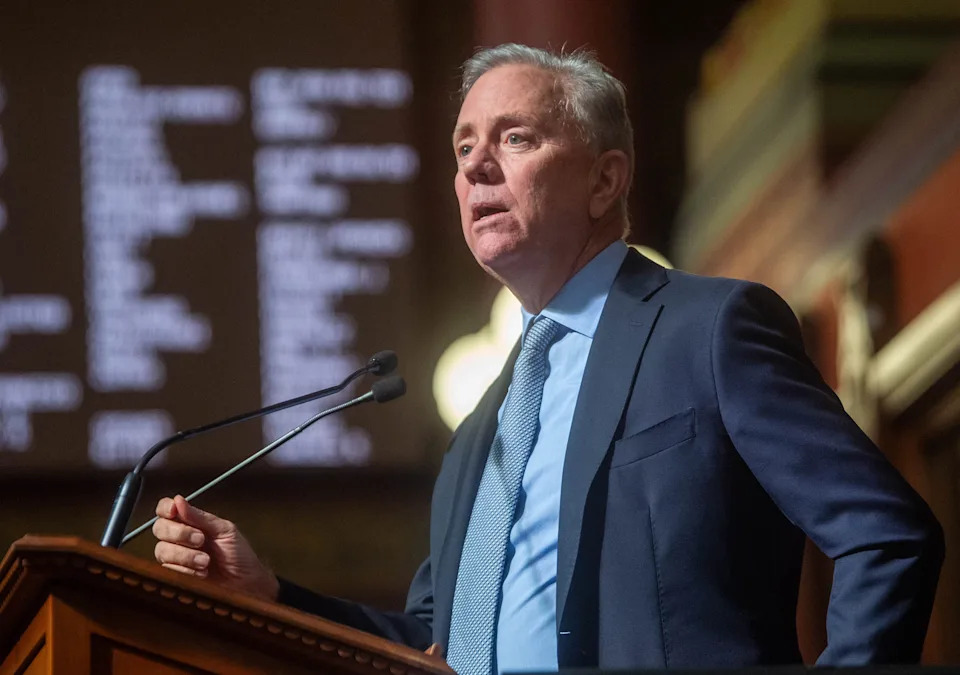
Connecticut wants to make generic GLP-1s. Will RFK Jr. lend a hand?
Key Points
- Connecticut's New Law: Connecticut passed a law signed by Gov. Ned Lamont on July 8 to reduce state spending on weight-loss drugs like GLP-1s (e.g., Ozempic, Wegovy, Mounjaro, Zepbound) by petitioning the US Health and Human Services (HHS) to use federal patent rights under 28 US 1498 to produce generics.**
- Cost Concerns: The state spent $140 million on these drugs in fiscal year 2024 for its HUSKY Health program, prompting this innovative approach to control costs while other states restrict or eliminate coverage.**
- Federal Collaboration: The law allows Connecticut to form a consortium with other states to contract generic manufacturers, with potential royalties paid to original drugmakers at reduced rates (e.g., 7.5%-10% of production costs).**
- Political and Legal Uncertainty: Gov. Lamont and experts express caution about overreach of federal patent law, and the response from HHS Secretary Robert F. Kennedy Jr. remains uncertain, with past uses of the law showing mixed outcomes.**
- Market Dynamics: With drug prices easing due to increased supply, compounding markets, and looming generic competition (e.g., in Canada), Connecticut’s move comes at a potentially impactful time for patent law application.**
Summary
Connecticut has enacted a groundbreaking law signed by Gov. Ned Lamont on July 8 to curb the soaring costs of weight-loss drugs like GLP-1s (e.g., Novo Nordisk’s Ozempic and Eli Lilly’s Mounjaro), which cost the state $140 million in 2024 for its HUSKY Health program. The legislation directs the Commissioner of Social Services to petition HHS Secretary Robert F. Kennedy Jr. to invoke federal patent rights under 28 US 1498, allowing generic production of these drugs with royalties paid to original manufacturers at reduced rates. This approach, likened to eminent domain, could involve a consortium of states to contract manufacturers, with other states already showing interest. While some states have limited or cut coverage, Connecticut expanded it in 2023 and now seeks a sustainable solution. However, Gov. Lamont and legal experts caution about potential overreach of federal law, and the response from HHS remains uncertain. Past uses of this patent law, such as for Hepatitis C drugs in Louisiana and anthrax medication post-9/11, show mixed results, often leading to negotiated deals. Amid easing drug prices, a growing compounding market, and upcoming generic competition in Canada, Connecticut’s strategy arrives at a critical juncture, though political will and legal challenges could impact its success. Experts and advocates are keenly observing whether this could set a precedent for addressing high drug costs nationwide.
yahoo
July 20, 2025
Stocks
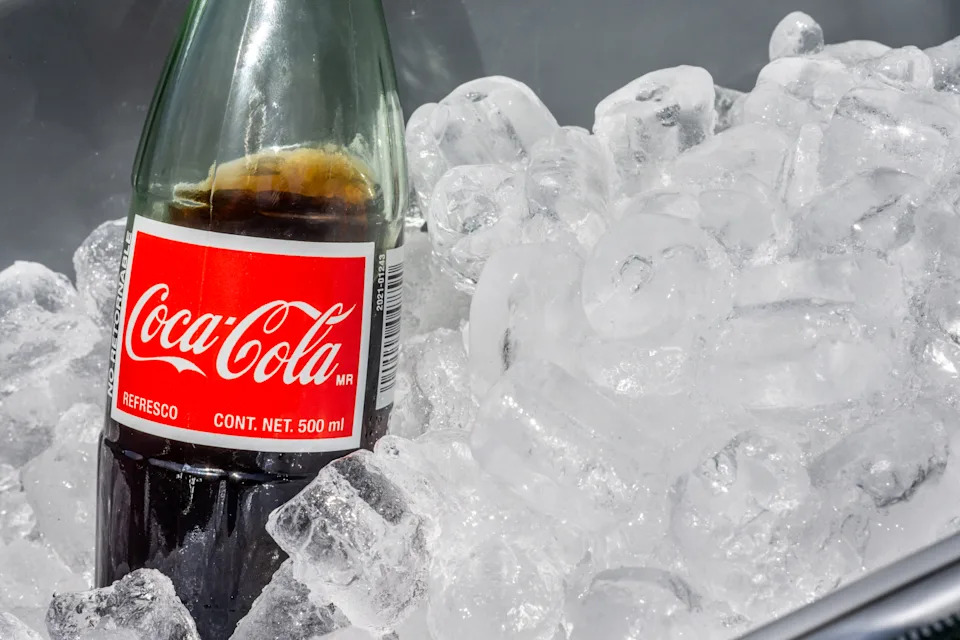
Big food companies undergo 'self reflection' on business future as deals sweep the sector
Key Points
- Industry Flux: Big food companies like Kraft Heinz, PepsiCo, and Coca-Cola are undergoing significant self-reflection due to shifting consumer tastes, stalled growth, and regulatory pressures.**
- Acquisitions and Breakups: Companies are responding with major deals, such as PepsiCo's acquisition of Poppi and Siete Foods, and potential breakups like Kraft Heinz, while Kellogg's split entities have been acquired by private players.**
- Performance Struggles: Core businesses are underperforming, with PepsiCo reporting volume declines in its North America beverage segment and Kraft Heinz shares dropping over 65% since its merger.**
- Investor Pressure: Activist and large investors are pushing for changes to boost stagnant share prices, as seen with Kellogg's breakup yielding a 40% gain for investors.**
- Strategic Shifts: Acquisitions target higher-growth, smaller brands aligned with industry trends, while breakups aim to streamline portfolios and enhance value.**
Summary
Big food companies are grappling with an uncertain future as consumer preferences shift, growth stagnates, and regulatory pressures mount. Industry giants like Kraft Heinz, PepsiCo, and Coca-Cola are reevaluating their US portfolios amid declining performance, with PepsiCo reporting a 2% volume drop in its North America beverage business. Strategic moves include acquisitions of smaller, high-growth brands like Poppi and Siete Foods by PepsiCo, and Hershey’s purchase of Lesser Evil. Meanwhile, breakups are on the table, with Kraft Heinz potentially splitting its condiments and grocery segments, and Kellogg’s recent division into WK Kellogg and Kellanova resulting in acquisitions by Ferrero and Mars Candy, respectively. Analysts note a reactive approach as core businesses falter, prompting companies to buy growth or restructure. Investor pressure for better returns is also driving change, with Kellogg’s breakup yielding significant gains. This period of flux, described as unusual for a typically stable sector, reflects a broader industry trend of adaptation and transformation.
yahoo
July 20, 2025
Stocks

Fed's Goolsbee defends Powell as 'totally honorable guy' amid White House attacks
Key Points
- Central Bank Independence: Chicago Federal Reserve President Austan Goolsbee strongly supports central bank independence, emphasizing its critical role in maintaining economic stability and low inflation, as evidenced by poorer economic outcomes in countries without such independence.**
- Support for Jerome Powell: Goolsbee expressed admiration for Fed Chair Jerome Powell, calling him a “totally honorable guy” and a “first ballot Hall of Famer,” amid political pressure from President Trump and his allies.**
- Caution on Interest Rates: Goolsbee echoed Powell’s cautious stance on cutting interest rates, citing uncertainties around the impact of Trump’s tariffs on inflation and the need for more data before making decisions.**
- Tariff Impacts: He noted that while tariffs are increasing goods prices, the effect hasn’t spilled over to services, maintaining a “wait and see” approach to assess broader inflationary pressures.**
Summary
Chicago Federal Reserve President Austan Goolsbee recently defended central bank independence and Federal Reserve Chair Jerome Powell amid political pressure from President Trump and his allies. In a Yahoo Finance interview, Goolsbee stressed that independence from political interference is vital for economic stability, citing higher inflation and worse growth in countries lacking it. He praised Powell as honorable and highly capable, despite Trump’s frustration with Powell’s cautious approach to interest rates and concerns over potential inflation from tariffs. Goolsbee mirrored Powell’s “wait and see” stance on rate cuts, noting that while tariffs are raising goods prices, the impact hasn’t extended to services. He highlighted the uncertainty caused by staggered tariff implementations and geopolitical factors, suggesting that rate cuts depend on clearer inflation data. Meanwhile, internal Fed divisions persist, with Governor Christopher Waller advocating for a rate cut in July, contrasting with market expectations of a hold until September. Goolsbee refrained from predicting specific rate cut timelines, emphasizing the need to monitor inflation trends closely.
yahoo
July 19, 2025
Stocks
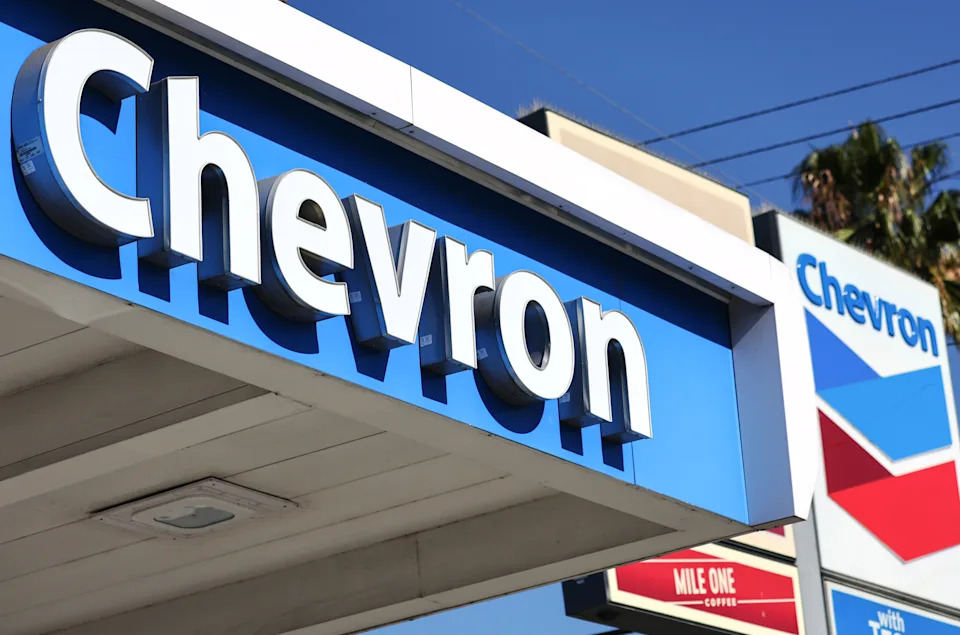
Chevron's $53B deal for Hess clinches access to a 'once-in-several-lifetimes' asset for the oil giant
Key Points
- Chevron (CVX) is set to finalize a $53 billion all-stock acquisition of Hess (HES), gaining access to Hess' 30% stake in the Stabroek offshore block in Guyana, which holds over 11 billion barrels of oil.
- An arbitration panel at the International Chamber of Commerce in Paris ruled in favor of Chevron, allowing the deal to proceed despite opposition from ExxonMobil (XOM), which holds a 45% stake in the same block.
- The deal is seen as transformative for Chevron, enhancing its growth profile, driving free cash flow, and providing geographic diversification, amidst recent financial challenges and workforce reductions.
- ExxonMobil, partnered with Hess since 2014, contested the merger citing preemptive rights, but ultimately respected the arbitration outcome while expressing disagreement.
- This merger is one of the largest in the energy sector recently, following Exxon’s $60 billion acquisition of Pioneer Natural Resources, and may spur further industry consolidation.
Summary
Chevron (CVX) is poised to complete a $53 billion acquisition of Hess (HES) after nearly two years of contention, securing a 30% stake in Guyana’s Stabroek offshore block, estimated to contain over 11 billion barrels of oil. An arbitration panel in Paris ruled in Chevron’s favor, sidelining ExxonMobil (XOM), which holds a 45% stake and contested the deal citing preemptive rights. Despite initial stock gains, Chevron’s shares fell 1.5% post-ruling. The merger, one of the largest in the energy sector recently, is expected to bolster Chevron’s growth, free cash flow, and global diversification, especially as it lags behind Exxon in earnings and stock performance. Chevron’s leadership views the deal as a strategic enhancement for long-term shareholder value. Meanwhile, Exxon, partnered with Hess since 2014, expressed disagreement but respected the arbitration process. The deal’s significance extends beyond Chevron, contributing to Guyana’s economic boom and potentially triggering further industry mergers, as noted by experts. This follows Exxon’s $60 billion acquisition of Pioneer Natural Resources, highlighting a trend of major consolidation in the oil and gas sector amidst evolving energy demands.
yahoo
July 19, 2025
Stocks
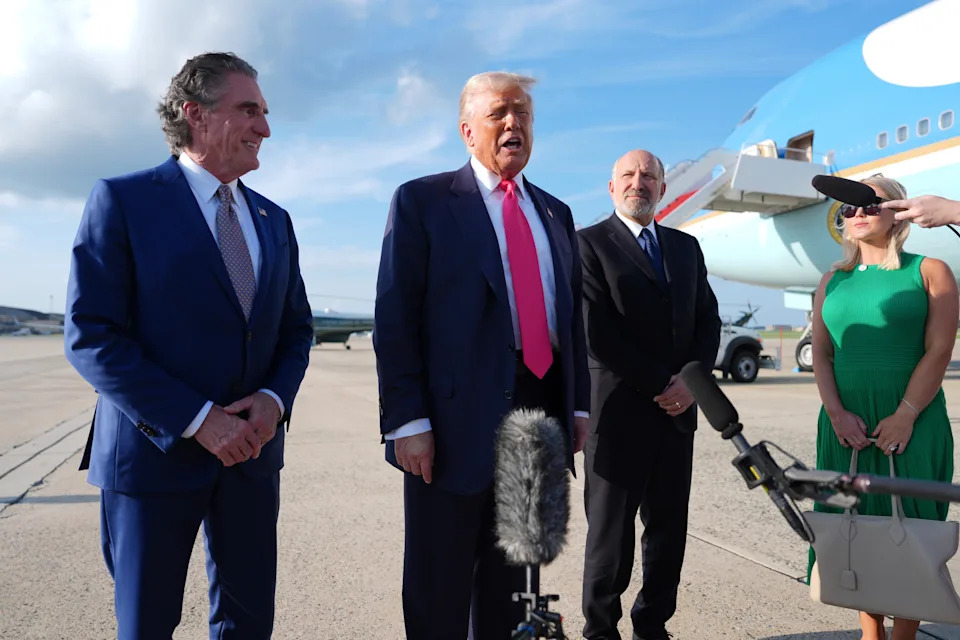
For Sale: Trump is leveraging power of his office to reap profits for family businesses
Key Points
- Unprecedented Personal Gain: President Donald Trump has leveraged his office for personal financial gain in his second term, amassing hundreds of millions through family businesses in crypto, real estate, and merchandise.**
- Conflicts of Interest: Trump family ventures, including cryptocurrencies and overseas deals, often involve entities with interests before the federal government, raising significant ethical concerns.**
- Lack of Oversight: With a Republican-controlled Congress, loyalist administration, and Supreme Court immunity rulings, Trump faces little immediate accountability for these conflicts.**
- Rejection of Past Promises: Trump's actions contradict his "drain the swamp" pledge, with no blind trust for assets and direct promotion of family business interests from the White House.**
- Cryptocurrency Focus: Trump's shift from crypto skeptic to advocate, including launching family-run crypto ventures, exemplifies the intertwining of personal profit and policy deregulation.**
Summary
In his second term, President Donald Trump has unprecedentedly used his office for personal financial gain, with Trump family businesses earning hundreds of millions from cryptocurrencies, overseas deals, and merchandise like bibles and shoes. Ventures such as a crypto coin worth $320 million and a $2 billion foreign investment highlight the scale of these profits, often from entities with federal interests, raising ethical concerns. Critics, including academics and Democrats, decry this as corruption, contrasting it with past presidents’ use of blind trusts to avoid conflicts. Despite his earlier "drain the swamp" promise, Trump faces little oversight due to a supportive Congress, loyal administration, and Supreme Court immunity rulings. His direct promotion of family businesses, including crypto initiatives he once called a scam, underscores a policy-profit overlap, with plans to deregulate the industry further. While the White House insists Trump’s actions aim to position the U.S. as a crypto leader, the intertwining of personal and presidential interests remains a central controversy of his tenure.
yahoo
July 18, 2025
Stocks

Meta Hires Two Key Apple AI Experts After Poaching Their Boss
Key Points
- Meta Platforms Inc. has hired key AI researchers Mark Lee and Tom Gunter from Apple Inc. for its Superintelligence Labs team, following the recruitment of their former boss, Ruoming Pang.
- Meta is aggressively recruiting AI talent, offering substantial compensation packages, with Pang receiving over $200 million and Gunter joining a group with packages exceeding $100 million.
- Apple's AI team, the Apple Foundation Models (AFM), is experiencing turmoil, with potential reliance on external models like OpenAI’s ChatGPT or Anthropic’s Claude for Apple Intelligence features.
- Meta's CEO Mark Zuckerberg has prioritized AI, planning to invest hundreds of billions in computing power to develop superintelligence, and placing top AI hires near his desk for collaboration.
- Apple is attempting to retain talent with raises, but these are significantly lower than Meta’s offers, contributing to ongoing staff departures.
Summary
Meta Platforms Inc. is intensifying its pursuit of AI dominance by hiring key researchers Mark Lee and Tom Gunter from Apple Inc. for its Superintelligence Labs team, shortly after recruiting their former boss, Ruoming Pang, with a compensation package exceeding $200 million. This reflects a broader tech industry race for AI talent, with Meta, under CEO Mark Zuckerberg, prioritizing artificial intelligence through massive investments in personnel and infrastructure to rival companies like OpenAI and Google. Meanwhile, Apple’s AI division, the Apple Foundation Models team, faces uncertainty as it considers integrating external models such as ChatGPT or Claude for features like Siri, while struggling to retain staff against Meta’s lucrative offers. Despite Apple’s efforts to offer raises, the disparity in compensation—Meta’s packages often multiples higher—continues to drive talent away. Zuckerberg’s vision includes investing hundreds of billions in computing power to achieve superintelligence, with top hires working closely with him at Meta’s headquarters, underscoring his commitment to building an elite AI team.
yahoo
July 18, 2025
Stocks
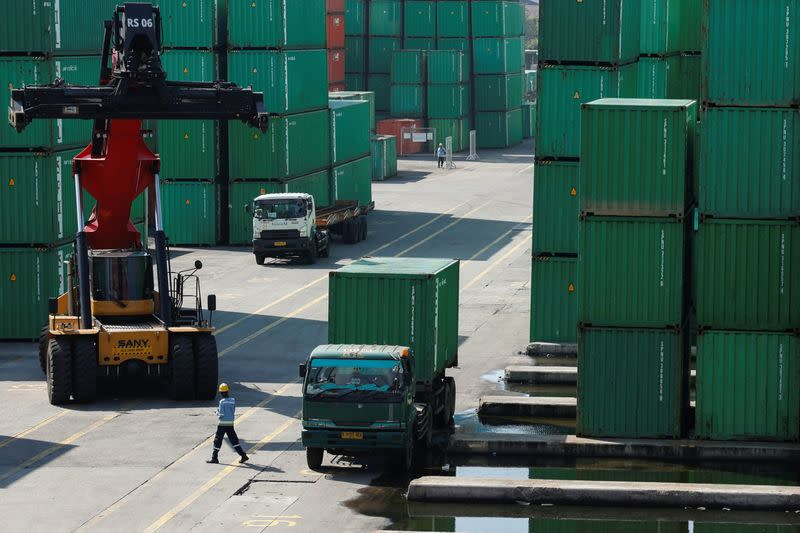
China says successful US trade talks make return to tariff war unnecessary
Key Points
- China's Commerce Minister Wang Wentao emphasized the need to stabilize trade relations with the U.S., urging the U.S. to act responsibly as a major power.
- China faces an August 12 deadline to finalize a tariff agreement with the U.S., with potential global supply chain disruptions if no deal is reached.
- Recent negotiations in Europe highlighted that a tariff war is unnecessary, with Wang advocating for dialogue to manage differences.
- Nvidia will resume selling H20 AI chips to China, a decision linked to broader negotiations on rare earths exports.
- Wang noted that forced decoupling between the U.S. and China is impractical, as both nations rely on irreplaceable goods and services.
Summary
China's Commerce Minister Wang Wentao expressed a strong desire to stabilize trade relations with the United States, emphasizing the economic interdependence between the two nations despite recent tensions. Speaking to reporters, Wang urged the U.S. to act as a responsible superpower and highlighted the importance of dialogue, citing productive talks in Geneva and London as evidence that a tariff war is avoidable. With an August 12 deadline looming for a durable tariff agreement, failure to reach a deal could disrupt global supply chains with duties exceeding 100%. Wang also met with Nvidia CEO Jensen Huang, who confirmed the resumption of H20 AI chip sales to China, a move tied to negotiations on rare earths, which saw a 32% export increase in June. Despite high U.S. tariffs on China at 53.6%, Wang stressed that forced decoupling is unfeasible due to the irreplaceable nature of traded goods and services. China remains committed to avoiding a trade war but is prepared to defend its interests if necessary, seeking a path toward healthy and sustainable economic ties with the U.S. through continued communication and cooperation.
yahoo
July 18, 2025
Stocks
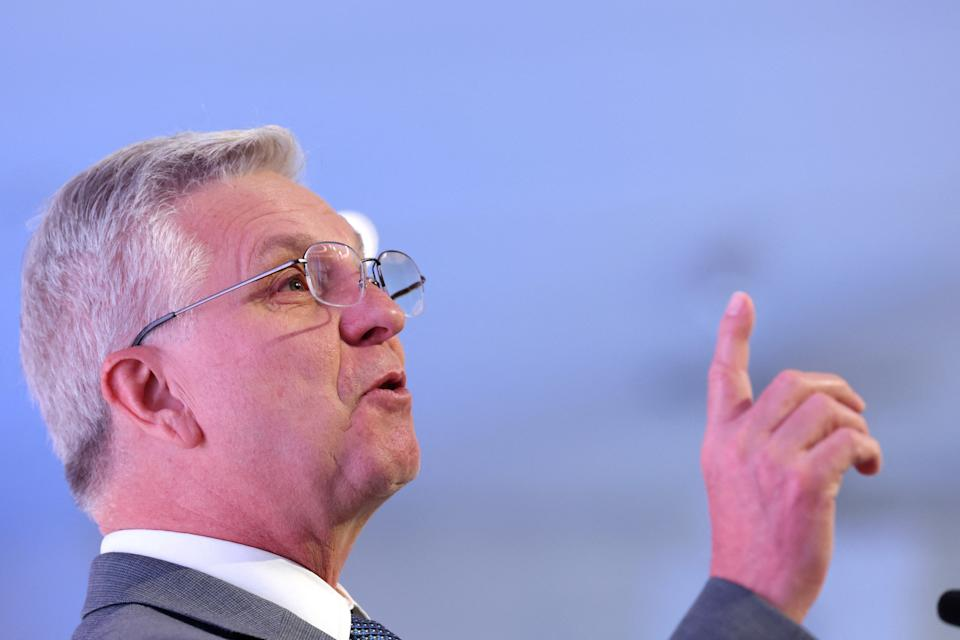
Waller makes strongest call yet for rate cut in July, underscoring Fed divide
Key Points
- Federal Reserve governor Christopher Waller strongly advocates for a rate cut at the upcoming July 29-30 policy meeting, suggesting a target rate of 3%, significantly lower than the current 4.25%-4.5%.
- Waller argues that inflation from tariffs is temporary and the Fed should focus on employment, citing slowing private sector job growth and increasing downside risks to the labor market.
- There is a divide within the Fed, with some officials like Adriana Kugler and John Williams opposing immediate rate cuts due to potential inflation from tariffs, expecting it to rise in the coming months.
- Waller’s stance aligns with President Trump’s push for lower rates, while Fed Chair Jerome Powell and others advocate for more time to assess inflation trends.
- The debate highlights opposing views within the Fed on how tariffs and economic data should influence monetary policy decisions.
Summary
Federal Reserve governor Christopher Waller has made a compelling case for a rate cut at the July 29-30 meeting, proposing a target rate of 3%, well below the current 4.25%-4.5%. Speaking in New York, Waller emphasized that inflation from tariffs is temporary and urged the Fed to prioritize employment, noting slowing private job growth and rising labor market risks. His position, supported by colleague Michelle Bowman and aligning with President Trump’s calls for lower rates, contrasts with other Fed officials like Adriana Kugler and John Williams, who caution against cuts due to potential inflation from tariffs, predicting increases through 2026. Fed Chair Jerome Powell also favors waiting for clearer inflation data, highlighting a deepening divide within the central bank. This debate underscores differing views on balancing inflation control with employment goals amid external pressures and tariff impacts.
yahoo
July 18, 2025
Stocks
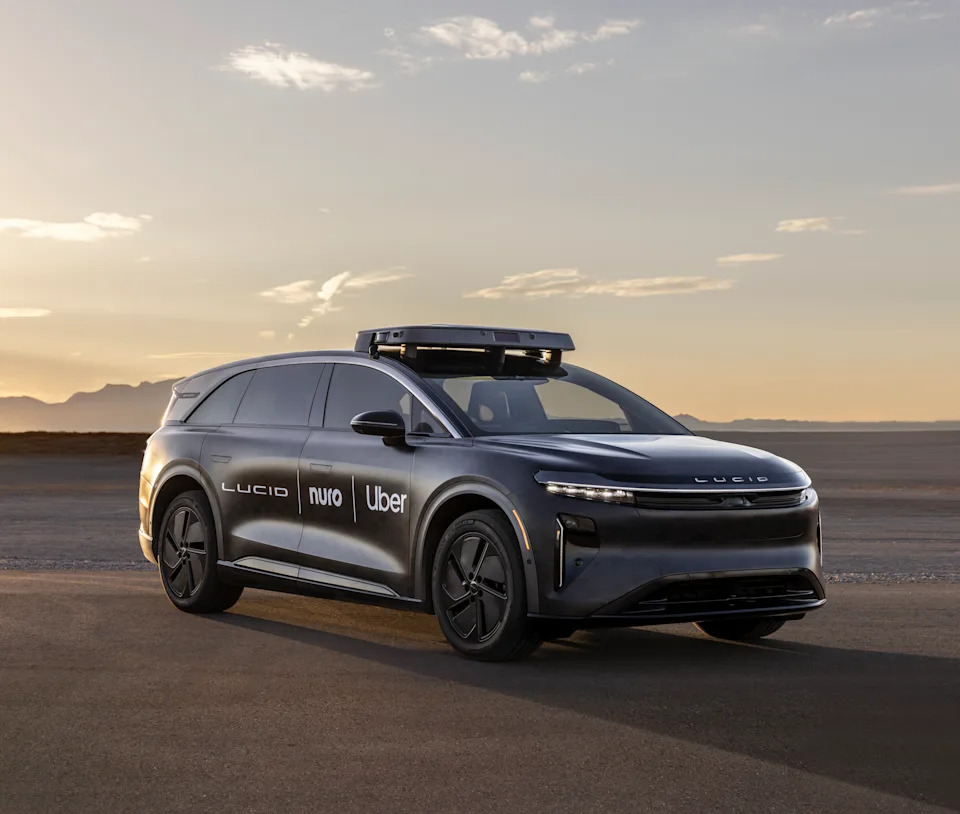
Uber, Lucid partner on new robotaxi service, taking on Waymo and Tesla
Key Points
- Uber, Lucid, and Nuro have partnered to launch a next-generation premium global robotaxi program exclusively for the Uber platform, featuring the Lucid Gravity SUV equipped with Nuro’s Level 4 autonomous software.
- Uber plans to deploy 20,000 or more Lucid EVs over the next six years, with the service expected to launch in a major US city in 2025, and will invest $300 million in Lucid and a similar amount in Nuro.
- Lucid’s stock surged nearly 30% following the announcement, reflecting strong market confidence in the partnership and the company’s autonomous vehicle potential.
- This initiative marks Uber’s return to robotaxi services after halting its own operations following a 2018 accident, and it follows competition from Waymo and Tesla in the autonomous driving space.
Summary
Uber has teamed up with electric vehicle manufacturer Lucid and autonomous tech firm Nuro to introduce a premium global robotaxi program exclusively for the Uber platform. Announced recently, the initiative will integrate Nuro’s Level 4 autonomous software into Lucid’s Gravity SUV, with plans to deploy over 20,000 vehicles in the next six years, starting in a major US city in 2025. Uber will invest $300 million in Lucid and a comparable sum in Nuro, while the vehicles will be managed by Uber or third-party fleet partners. Lucid’s stock jumped nearly 30% on the news, bolstered by the company’s strong Q2 deliveries and ambitious 2025 production goals for its Air sedans and Gravity SUVs. This partnership signifies Uber’s re-entry into the robotaxi market after a hiatus following a 2018 accident, positioning it against competitors like Waymo and Tesla, who are also advancing in autonomous driving. The collaboration is further contextualized by Saudi Arabia’s Public Investment Fund’s significant stakes in both Uber and Lucid, potentially influencing the strategic alliance. A prototype is already under testing at Nuro’s Las Vegas facility, marking a significant step toward realizing the vision of accessible, safe autonomous transport.
yahoo
July 17, 2025
Stocks
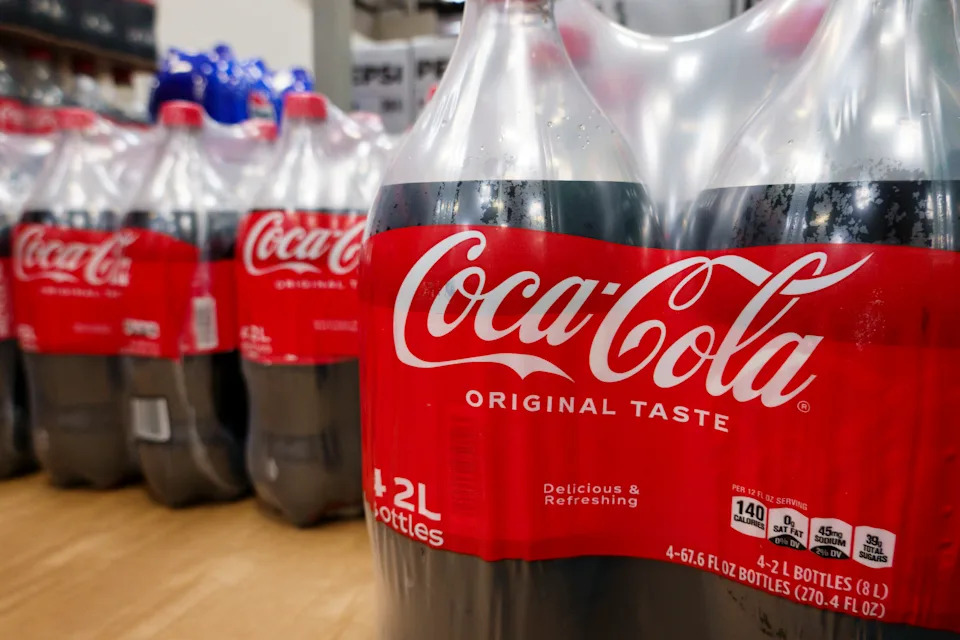
Coca-Cola says it appreciates Trump's 'enthusiasm' after president says company will use real sugar in drinks
Key Points
- Coca-Cola (KO) to Switch Ingredients: Coca-Cola is set to transition from high fructose corn syrup (HFCS) to real cane sugar in its U.S. products, following discussions with President Trump, as announced on social media.**
- Market Reactions: Sugar futures (Sugar No. 11, SB=F) rose over 1.3%, while HFCS suppliers like Archer-Daniels-Midland (ADM) and Ingredion (INGR) saw share declines of over 2.7% and 5%, respectively.**
- Competitor Response: PepsiCo (PEP), a major rival, reported a 5% stock increase after strong quarterly earnings and discussed plans to eliminate artificial colors and flavors in beverages.**
- Tariff Implications: The Trump administration's tariff negotiations, including a 50% tariff on Brazilian goods, may impact sugar supply chains, with Brazil being the top global sugar cane producer.**
Summary
Coca-Cola (KO) is poised to switch from high fructose corn syrup (HFCS) to real cane sugar in its U.S. products, following President Trump’s social media announcement and subsequent confirmation from the company. This move aligns with a broader trend among food and beverage companies like Kraft Heinz and General Mills making ingredient changes under the Trump administration. The shift has impacted markets, with sugar futures (Sugar No. 11) rising over 1.3%, while HFCS suppliers Archer-Daniels-Midland (ADM) and Ingredion (INGR) saw significant stock declines. Meanwhile, PepsiCo (PEP) reported strong earnings, with its stock up 5%, and outlined plans to remove artificial additives from beverages. The announcement coincides with ongoing tariff negotiations, including a 50% tariff on Brazilian goods, which could affect sugar supply chains given Brazil’s status as the world’s top sugar cane producer. Coca-Cola’s stock remained relatively stable, with quarterly earnings expected on July 22. This ingredient change reflects both consumer health trends and political influences, potentially reshaping the competitive landscape for beverage giants and their suppliers.
yahoo
July 17, 2025
Stocks

Retail sales rise more than expected in June
Key Points
- Retail sales in June increased by 0.6%, surpassing economists' expectations of a 0.1% rise, following a 0.9% decline in May.
- The control group, which impacts GDP readings, rose by 0.5% in June, compared to a 0.2% increase in May, exceeding forecasts of 0.3%.
- Sales excluding auto and gas also grew by 0.6% in June, doubling the expected 0.3% rise, with significant gains in miscellaneous store retailers (1.8%) and motor vehicle sales (1.2%).
- Economists suggest that delayed tariff price increases and steady income growth are supporting consumer spending, despite concerns over tariff uncertainty affecting future economic activity.
- Jobless claims dropped to 221,000 for the week ending July 12, the lowest in three months, while investor expectations for Federal Reserve rate cuts in September fell to 54% from 70%.
Summary
Retail sales in June showed a robust rebound, rising 0.6% month-over-month, exceeding economists’ predictions of a 0.1% increase and recovering from a 0.9% drop in May, according to revised Census Bureau data. This growth, particularly a 0.5% rise in the control group impacting GDP and a 0.6% increase in sales excluding auto and gas, suggests that President Trump’s tariffs have not yet significantly altered consumer spending patterns. Economists like Thomas Ryan from Capital Economics note that these figures dispel fears of faltering consumer spending due to tariffs, while Nationwide’s Ben Ayers highlights that delayed tariff price impacts and steady income growth continue to drive spending despite household concerns. Key sectors like miscellaneous store retailers and motor vehicle sales led the gains. Meanwhile, jobless claims fell to a three-month low of 221,000, indicating labor market resilience. However, tariff uncertainty looms over the economic outlook for the second half of the year, with expectations for weaker activity despite a projected solid GDP rebound in Q2. Investor sentiment on Federal Reserve rate cuts has also cooled, with the likelihood of a September cut dropping to 54% from 70%, amid signs of persistent inflation. This retail sales report offers critical insight as markets assess the broader impact of trade policies on economic behavior.
yahoo
July 17, 2025
Stocks

Republican senators caution Trump against firing Fed chair Jerome Powell
Key Points
- GOP Support for Powell: Some Republican senators, including Thom Tillis and Mike Rounds, are backing Federal Reserve Chair Jerome Powell, warning that firing him could undermine the Fed’s independence and destabilize the U.S. economy.**
- Trump’s Threats: President Donald Trump has fluctuated on whether to dismiss Powell, with some far-right House members encouraging the move, despite legal and economic concerns.**
- Legal Constraints: Firing the Fed chair is legally complex, as the position is protected from political pressure, requiring a “for cause” justification, which some argue is not met by current criticisms like the Fed’s renovation project.**
- Economic Risks: Senators like Tillis highlight that removing Powell could harm everyday Americans with investments like 401ks, while others stress the importance of an independent central bank for market confidence.**
Summary
Federal Reserve Chair Jerome Powell is receiving unexpected support from some GOP senators amid President Donald Trump’s threats to fire him. Republicans like Thom Tillis and Mike Rounds caution that dismissing Powell would jeopardize the Fed’s independence, potentially destabilizing the U.S. economy and eroding market confidence. Trump’s indecision on the matter has sparked debate, with some far-right House members urging action, while others, including House Speaker Mike Johnson, question the legal authority to remove Powell. Established over a century ago, the Fed is insulated from political interference, with dismissal requiring a justified “cause,” a threshold some argue is unmet by criticisms like a $2.5 billion renovation project. While certain Republicans, like Ohio Sen. Bernie Moreno, criticize Powell’s leadership and support his removal, others warn of the economic fallout for ordinary Americans and the risk of lengthy legal battles. As Powell’s term nears its end next year, Trump may soon have the chance to appoint a new chair, but the current controversy underscores the delicate balance between political influence and central bank autonomy.
yahoo
July 17, 2025
Stocks

France Adds Support for Using Most-Potent Trade Tool on US
Key Points
- EU Response to US Tariffs: A growing number of EU member states, led by France, are pushing to use the EU's anti-coercion instrument (ACI) as a retaliatory measure if no agreement is reached with the US by August 1 and Donald Trump imposes threatened 30% tariffs on EU exports.**
- Potential Retaliatory Measures: The ACI could enable the EU to impose new taxes on US tech giants, restrict US investments, limit market access, or bar US firms from public contracts in Europe, potentially escalating a transatlantic trade war.**
- Negotiations Continue: Despite Trump's tariff threats, EU and US officials are engaged in ongoing talks, with EU trade chief Maros Sefcovic heading to Washington for further discussions, aiming for a negotiated outcome.**
- EU Caution on ACI Use: The European Commission, led by Ursula von der Leyen, considers the use of the ACI premature, emphasizing that it is reserved for extraordinary situations, while preferring proportional countermeasures and dialogue.**
Summary
A Bloomberg article highlights escalating trade tensions between the EU and the US as Donald Trump threatens 30% tariffs on EU exports by August 1, alongside existing duties on cars, steel, and aluminum. In response, a French-led coalition of over half a dozen EU member states advocates for deploying the anti-coercion instrument (ACI), a powerful trade tool that could impose retaliatory measures like taxes on US tech giants or restrictions on investments and market access. While negotiations continue, with EU trade chief Maros Sefcovic traveling to Washington, the European Commission deems ACI use premature, favoring dialogue and proportional countermeasures. French Minister Benjamin Haddad stresses the need for strength and unity in negotiations, warning of a potential transatlantic trade war if the ACI is activated. Despite Trump's escalating rhetoric, including threats on pharmaceuticals, EU officials remain focused on reaching a deal, previously hoping for a framework with a reduced 10% levy on most exports. The ACI, designed as a deterrent against coercive trade actions, reflects the EU's bolstered trade defenses post previous US tariffs and actions like China’s restrictions on Lithuania.
yahoo
July 16, 2025
Stocks

Markets are now ho-hum about tariff threats. Trump and Wall Street disagree about why.
Key Points
- White House View: The Trump administration believes market resilience to tariff threats indicates trader acceptance and support for rebalancing global trade, potentially encouraging President Trump to maintain his Aug. 1 deadline for new tariffs.**
- Market Skepticism: Many market observers argue that traders still oppose tariffs but are dismissive of Trump's latest threats, believing they may not materialize, reflecting a "Trump always chickens out" (TACO) sentiment.**
- Economic Risks: Critics and analysts, including JPMorgan Chase CEO Jamie Dimon, warn that markets may be underestimating the economic risks of tariffs, which could lead to higher interest rates, inflation, and a drag on growth.**
- Mixed Signals: While stock prices hit all-time highs, there’s a disconnect with tariff threats, and upcoming earnings seasons are expected to reveal the true impact of increased taxes on US companies.**
- Trade Developments: Ongoing trade talks and potential deals, like the recent one with Indonesia, add uncertainty, with Trump expressing indifference to outcomes with regions like the EU, potentially leading to higher tariffs.**
Summary
The article explores the conflicting interpretations of the stock market's muted response to President Trump's aggressive tariff threats. The White House sees this resilience as evidence of market support for rebalancing global trade, potentially emboldening Trump to stick to his Aug. 1 deadline for new tariffs. Conversely, many market analysts argue that traders remain opposed to tariffs but are skeptical of Trump’s threats materializing, a sentiment dubbed the "Trump always chickens out" (TACO) trade. Despite record-high stock prices, warnings from figures like JPMorgan Chase CEO Jamie Dimon highlight potential underestimation of economic risks, including inflation and growth slowdowns. Recent data showing a 2.7% annual CPI increase in June, alongside upcoming earnings reports, will provide further insight into tariffs’ impact. Trade developments, such as a deal with Indonesia reducing tariffs from 32% to 19%, add to the uncertainty, while Trump’s indifference to outcomes with regions like the EU raises the specter of higher tariffs. Critics argue the administration dismisses economic expertise, while Trump claims tariffs are fueling US economic strength, citing record stock highs and billions in tariff revenue. The coming weeks will be critical in determining whether markets are truly prepared for potential tariff-driven economic headwinds.
yahoo
July 16, 2025
Stocks
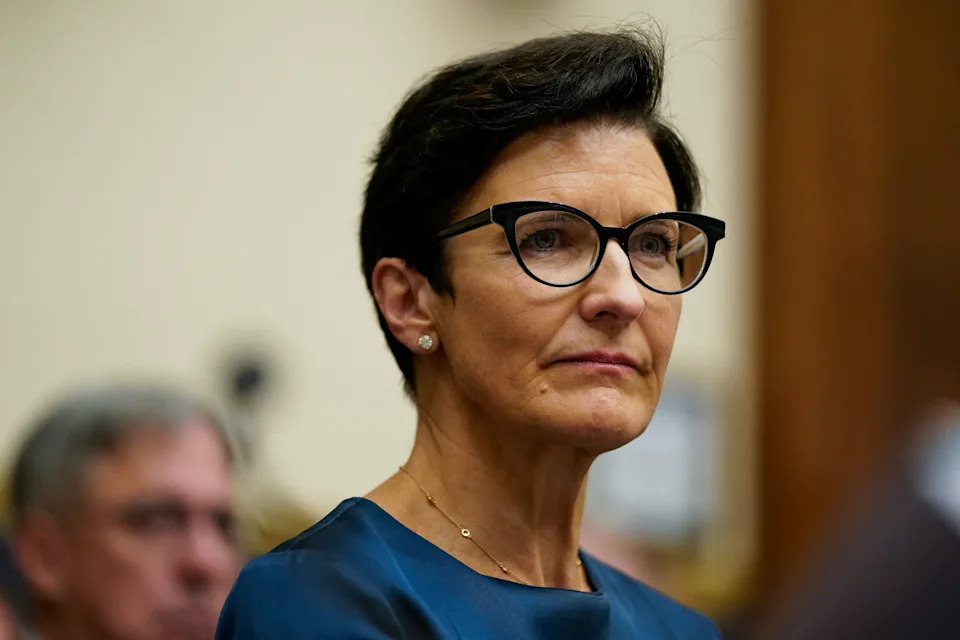
JPMorgan's Dimon and Citigroup's Fraser consider stablecoins in Wall Street crypto pivot
Key Points
- JPMorgan Chase and Citigroup CEOs, Jamie Dimon and Jane Fraser, announced plans to engage in stablecoin issuance, signaling Wall Street's growing acceptance of digital assets.
- Legislative efforts to regulate crypto, including stablecoins, faced setbacks as some GOP members blocked procedural votes in Congress during "Crypto Week."
- Major banks like Bank of America are also exploring stablecoin opportunities, anticipating federal approval and potential disruption of traditional payment systems.
- Proposed stablecoin legislation includes strict oversight, reserve requirements, and public disclosure mandates to ensure stability and transparency.
- Concerns persist about stablecoin risks, such as investor panic runs, despite their potential to enhance cross-border transactions and reduce crypto volatility.
Summary
Major Wall Street banks, including JPMorgan Chase and Citigroup, are pivoting toward digital assets as CEOs Jamie Dimon and Jane Fraser announced plans to issue stablecoins, reflecting a broader industry shift. This comes amid ongoing legislative debates in Congress, where efforts to pass comprehensive crypto regulation, including a federal framework for stablecoins, hit obstacles during "Crypto Week" due to GOP opposition to separate bill votes. Despite Dimon's historical skepticism, JPMorgan is developing a deposit token, while Bank of America and others explore collaborative stablecoin networks. The proposed legislation, already passed by the Senate, imposes strict oversight by federal and state regulators, mandates reserves in cash or Treasurys, and requires transparency. Stablecoins are touted for their stability and potential in cross-border payments, though concerns about risks like investor runs remain. Fraser noted that most stablecoin transactions currently settle crypto trades, with minimal use in payments. As banks prepare for potential federal approval, stablecoins could challenge traditional payment systems like Visa and Mastercard, reshaping financial landscapes if legislation advances.
yahoo
July 16, 2025
Stocks

Inflation accelerates in June as investors eye tariff-related price increases
Key Points
- Inflation Increase: The Consumer Price Index (CPI) rose 2.7% annually in June, up from 2.4% in May, driven by a reversal in falling gas prices, while core CPI, excluding food and energy, increased 2.9% year-over-year.**
- Tariff Impact Emerging: Signs of President Trump's tariffs affecting consumer prices are appearing, with increases in apparel (0.4%), footwear (0.7%), and furniture (0.4%), though the full impact may take time to materialize.**
- Trade Tensions: New tariffs ranging from 15% to 50% on imports from over 20 countries, including Canada, Mexico, and the EU, have heightened trade tensions, raising questions about inflation persistence.**
- Federal Reserve Uncertainty: Markets expect the Fed to hold rates steady in the near term due to tariff-related uncertainties, with the odds of a September rate cut dipping below 60%.**
- Shelter and Food Prices: Shelter costs, a major inflation driver, eased slightly to a 3.8% annual increase, while food prices remained sticky, though egg prices dropped 7.4% month-over-month.**
Summary
Inflation rose in June, with the Consumer Price Index (CPI) increasing 2.7% annually, up from 2.4% in May, driven by rebounding gas prices, according to the Bureau of Labor Statistics. Core CPI, excluding volatile food and energy, climbed 2.9% year-over-year. Monthly price increases matched or slightly exceeded expectations, with apparel, footwear, and furniture showing gains, hinting at the early effects of President Trump’s newly imposed tariffs ranging from 15% to 50% on imports from over 20 countries, including Canada, Mexico, and the EU. These trade tensions have sparked concerns about persistent inflation, though experts like Seema Shah and Greg Daco suggest tariff impacts may be temporary but could accelerate if staggered over time. Shelter costs, a key inflation driver, moderated slightly, while food prices remained sticky, except for a notable drop in egg prices. Amidst this, the Federal Reserve faces uncertainty, with markets anticipating steady rates in the near term and a reduced likelihood of a September cut. The interplay of tariffs and inflation continues to shape economic outlooks, with potential cost pass-throughs to consumers still unfolding.
yahoo
July 15, 2025
Stocks